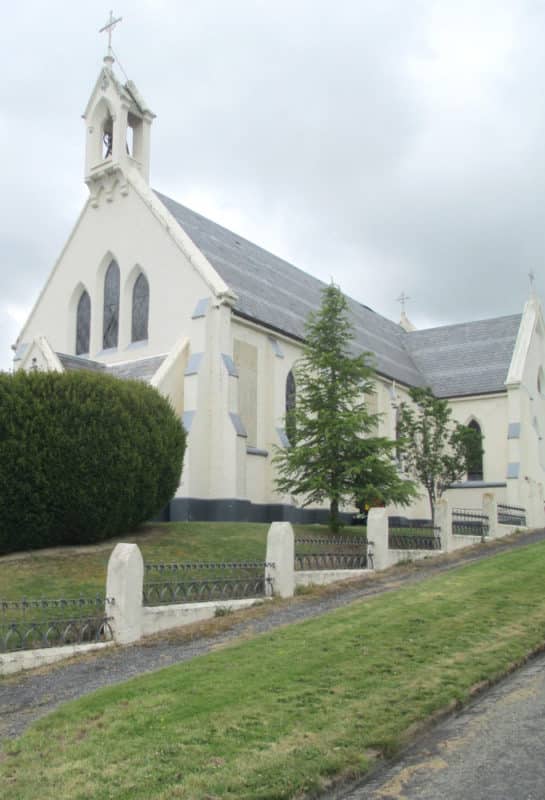by PETER OWENS
On December 5, St Patrick’s church in Lawrence, Central Otago, was closed as a parish church after being the centre for Catholic activity in the region for more than 100 years.
However, age took its toll on this historic church and, according to St Patrick’s parish chairman Geoff Blackmore, the category-2 New Zealand Heritage-listed building had serious infrastructure problems which would cost well over $1million to fix. An inspection by specialists revealed the church required a total re-roofing, refurbishment of some window installations, some minor earthquake strengthening, and an increasing rising damp problem.
According to Mr Blackmore, at a public meeting in February this year, parishioners and the Lawrence community said they would prefer to retain the building as a church. However, Mr Blackmore said the anticipated cost of restoration could not practically be met by the community. He said people have been very supportive of doing something, but unfortunately there was not enough money available to complete the repairs. He said ‘‘our own parishioners are ageing and dwindling, and the wider community is unable to help. That means, unfortunately, we’ve had to make the very hard decision to deconsecrate the building as a church, and move to have it sold”.
As a category 2 heritage-listed structure, new owners would need to preserve original architectural features wherever possible. ‘We haven’t really thought how it might be used,’’ Mr Blackmore said.
A final Mass in the church was celebrated by Dunedin Bishop Michael Dooley, with St Patrick’s parish priest Fr Chris O’Neill concelebrating. Of the 100 present and past parishioners in attendance, many had travelled long distances, and displayed their double-vaccination certificates on entering the church. The Mass was also livestreamed.
In his homily, Bishop Dooley gave thanks for all the work that had been done over many decades in Lawrence in the service of the Gospel.
St Patrick’s church had been a sacred space for many generations of people, he said. It has been a place where the Word of God has been proclaimed and where the sacraments have been celebrated.
“This very church, which we are sitting in here this morning, has played a very important role in preparing the way of the Lord, smoothing the path so that many people have been able to express their faith and follow the Lord.”
But while people speak of sacred spaces in their lives, God is not limited to this building, Bishop Dooley said. God is present in many ways in Lawrence and in
the district, including in the parish centre next door, which is now being used for Sunday Mass. People are still gathering, and the Gospel is still being preached, he said.
But this does not take away from the fact that there is a certain sadness about the closure of the church, which has been a huge part of the faith of people of this area and beyond, he added.
Bishop Dooley thanked the people of the parish for facing up to a hard decision, which was made after a lot of consultation and prayer. He admitted it had been a difficult decision to make.
“It is a mark of mature Christians to make those decisions after careful discernment and [placing] their trust in God, looking ahead to the future.”
He added that difficult decisions are having to be made throughout the world because of the pandemic at this time too.
The present church is not the first Catholic Church in Lawrence. In the 19th century, many Irish workers were in the district as a result of a gold rush.
In October, 1862, Fr Delphine Moreau, SM, had a canvas church erected at the goldfield and this was much appreciated by the miners, many of who came from Germany and France, as well as Ireland. However, a more permanent church was soon erected in Lawrence, which was blessed by Bishop Viard in 1864. This building, which was close to the site of the present St Patrick’s church, served the community until 1872.
In 1871, Bishop Moran established Lawrence as the first Catholic parish outside Dunedin city in the new Dunedin diocese. Fr William Larkin, the first parish priest, was responsible for the construction of a large Catholic church/school which opened in 1872. This building still stands and is now owned privately.
Among its celebrated alumni are Bill O’Leary “Arawata Bill” who is still remembered throughout the South, and Cardinal Reginald Delargy, who began his education at the Lawrence Catholic School.
He is commemorated in a stained-glass picture light designed by Beverley Shore Bennett of Wellington. This was installed in the present church in 1982. Another prominent person associated with the Lawrence Catholic School was “JJ” Woods, an early schoolmaster, who wrote the music for “God Defend New Zealand”.
However, the present church, which was deconsecrated on December 5, superseded the then-church/school. In 1891, contemporary accounts reported “crowds of visitors, including a trainload from Dunedin, watched Bishop Moran lay the foundation stone . . . “.
The church was built quickly, and was opened and blessed by Bishop Moran on January 6 in the following year. It was designed by the renowned Francis Petre, who later designed St Joseph’s Cathedral, Dunedin, and the former Cathedral of the Blessed Sacrament in Christchurch, as well as St Mary’s Basilica in Invercargill and Sacred Heart Basilica in Timaru.
From 1892, St Patrick’s Church in Lawrence has been the Mass centre for a wide area of Central Otago, but now demographics and economic conditions dictate a change in direction. From now on the Catholics of the Lawrence area will attend Mass in the Lawrence Catholic Centre, which operates from the former Catholic school.

Reader Interactions